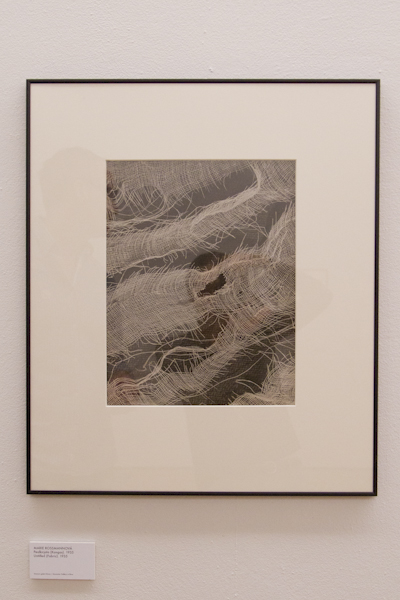I find myself drawn to visual arts like painting, photography and installations because they give me new ideas for writing.
I’ve rarely drawn inspiration from other writers. Music and lyrics have probably provided the greatest source of new ideas for me in the past, and the greatest influence on my work.
And in recent years I’ve found a great deal of inspiration for my writing in the visual arts.
I’ve never had an eye for colour, or a talent for creating visually. But interacting with such works of art lets me see the world in new ways. And that sparks new ideas for metaphor, imagery or structures to explore.
I read on a gallery display card that, “Eugen Wiskovsky applied the psychology of shapes to composition principles.”
What does that mean? And what “psychologies” can I explore in my writing to bring new insights to landscapes, the nature of travel, or memory? Are there psychologies of space or distance? Psychologies of motion, fast or slow?
Another exhibit suggests experimenting with travel sketches as “variations on space that has been narrowly defined and infused with light and shadow.”
What are the lights and shadows that colour an experience, and how can I frame that experience narrowly enough in narrative so that it reveals something about our lives?
This simple close-up image of fabric by Marie Rossmánnova caught my eye and my imagination on a recent rainy day exploration of Tallinn’s Kumu Museum:

I immediately remembered those grid-like depictions of space-time I’d seen in old physics text books, and the way that grid would be warped by the gravity of a black hole.
But the tears and imperfections shown in this photo hint at something more…
Could this be an image of someone’s personal space-time history, distorted and torn and fractured by memory?
Is it a memory diagram of a person’s life or their past?
Each tear represents some personal trauma that they suffered.
And each stretching of the grid represents those deeper, thicker times when we’re immersed in experiences, when we cram a year into a week.
This Quantum Memory Scan proves that time really does thicken and warp when we live fully. And it tears when we feel ourselves tearing inside.
Can such a diagram act as the summary of a life?
Will we one day have the ability to record and preserve our memories and feelings in this way?
And what if we could play those memories back, like setting a needle on a record groove?
Are they actually preserved somewhere right now, in the space-time continuum? And is time imaginary — just a construct we use to understand the present?
These are the things I like to think about in galleries.
Do you seek inspiration from other forms of art outside your field? Please share your insights and ideas with me in the comments. I’d love to hear about them.

Get your FREE Guide to Creating Unique Travel Experiences today! And get out there and live your dreams...
